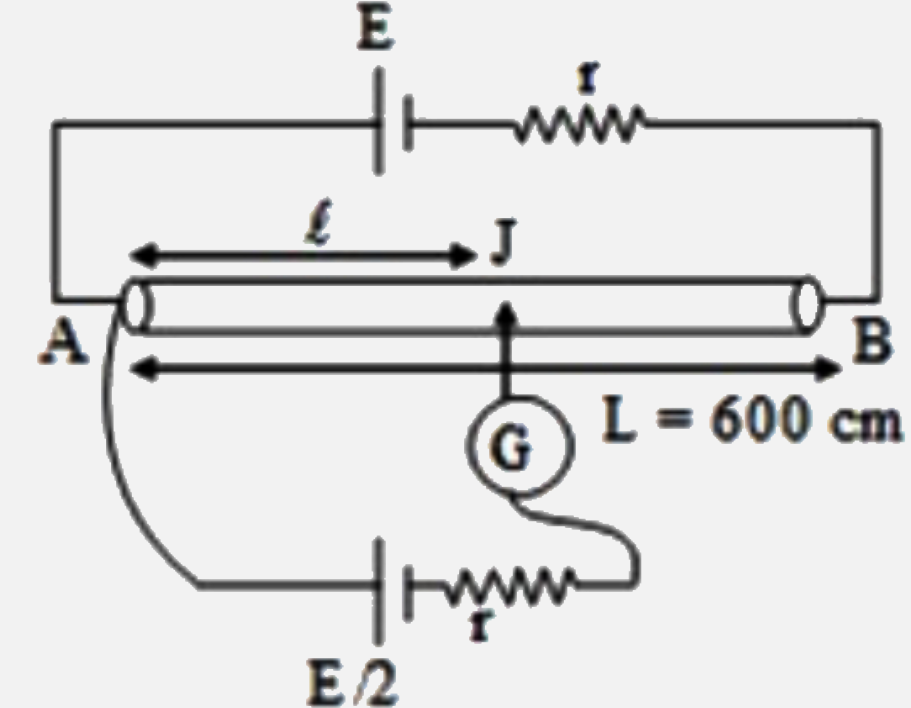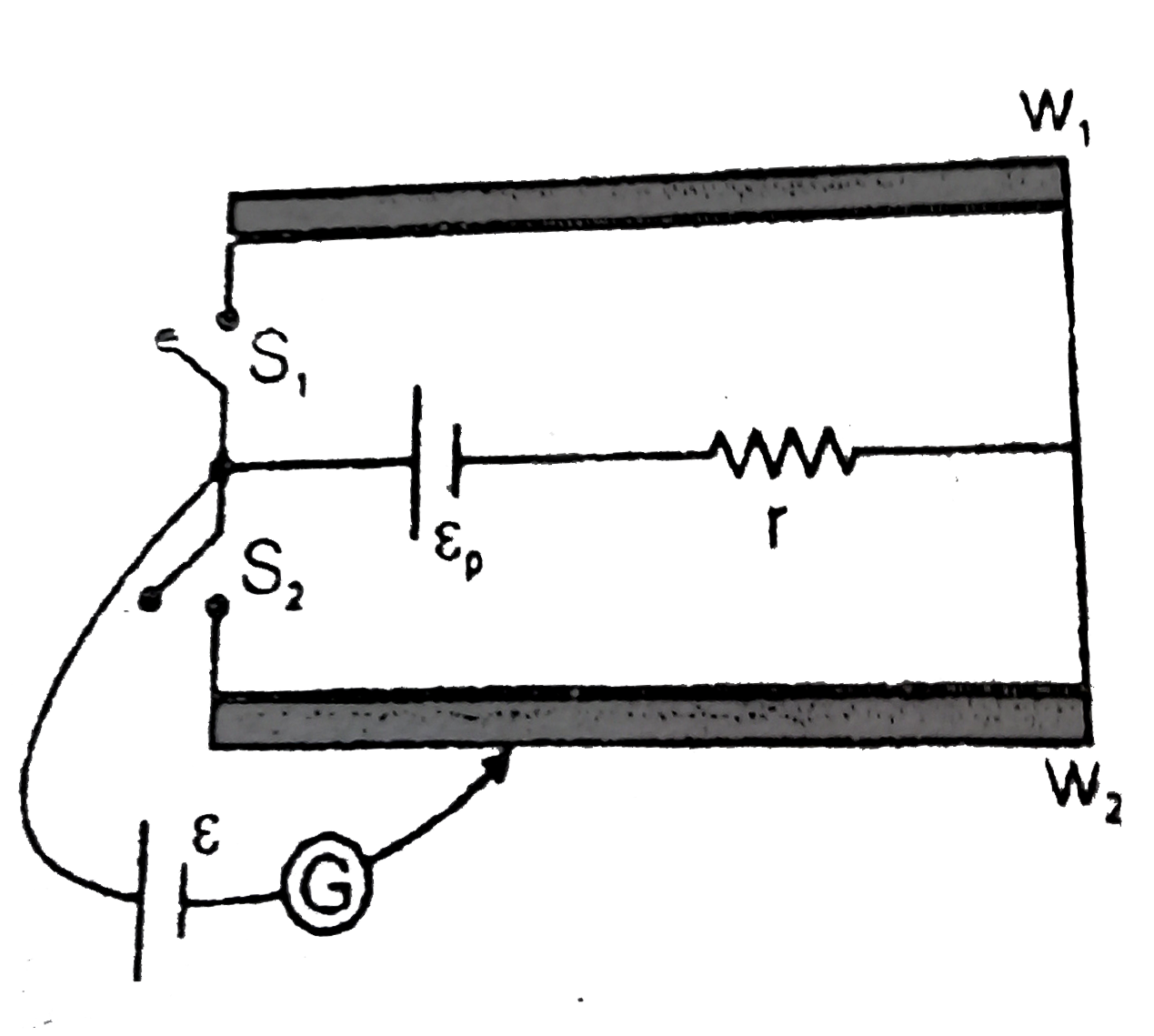What will be the effect on the accuracy of the result if we replace a single-wire potentiometer by a potentiometer having 12 wires, the length of each wire being 1m ?
To analyze the effect on the accuracy of the result when replacing a single-wire potentiometer with a potentiometer having 12 wires (each 1 meter long), we can follow these steps:
1. Understanding Potentiometer Basics:
A potentiometer measures potential difference by balancing it against a known voltage. The potential gradient (K) is defined as the ratio of the potential difference (V) to the length of the wire (L).
K=VL
2. Defining the Balance Point:
When a balance point is achieved at a length L1, the potential difference across this length can be expressed as:
Vbalance=K⋅L1=V⋅L1L
3. Considering Measurement Errors:
If there is an error in measuring L1, denoted as ΔL, we can express the percentage error in the measurement as:
Percentage Error=K⋅ΔLK⋅L1×100
Simplifying this gives:
Percentage Error=ΔLL1×100
4. Effect of Increasing Length:
If we increase the total length of the potentiometer by using 12 wires of 1 meter each, the total length L becomes 12 meters. Since the balance point L1 will also increase with the increase in total length, the percentage error can be analyzed:
If L increases, L1 also increases.
5. Conclusion on Accuracy:
As L increases, the percentage error ΔLL1 decreases. This means that the accuracy of the measurement improves when using a longer potentiometer.
Final Result
Replacing a single-wire potentiometer with a 12-wire potentiometer (each 1 meter long) will increase the accuracy of the measurements due to the decrease in percentage error associated with the longer effective length.
A potentiometer measures potential difference by balancing it against a known voltage. The potential gradient (K) is defined as the ratio of the potential difference (V) to the length of the wire (L).
When a balance point is achieved at a length L1, the potential difference across this length can be expressed as:
If there is an error in measuring L1, denoted as ΔL, we can express the percentage error in the measurement as:
If we increase the total length of the potentiometer by using 12 wires of 1 meter each, the total length L becomes 12 meters. Since the balance point L1 will also increase with the increase in total length, the percentage error can be analyzed:
As L increases, the percentage error ΔLL1 decreases. This means that the accuracy of the measurement improves when using a longer potentiometer.
Replacing a single-wire potentiometer with a 12-wire potentiometer (each 1 meter long) will increase the accuracy of the measurements due to the decrease in percentage error associated with the longer effective length.
Topper's Solved these Questions
- ELECTRICAL MEASURING INSTRUMENTSBOOK - CENGAGE PHYSICS ENGLISHCHAPTER - ELECTRICAL MEASURING INSTRUMENTSEXERCISE - Subjective
18 Videos
- ELECTRICAL MEASURING INSTRUMENTSBOOK - CENGAGE PHYSICS ENGLISHCHAPTER - ELECTRICAL MEASURING INSTRUMENTSEXERCISE - Single Correct
94 Videos
- ELECTRICAL MEASURING INSTRUMENTSBOOK - CENGAGE PHYSICS ENGLISHCHAPTER - ELECTRICAL MEASURING INSTRUMENTSEXERCISE - Solved Examples
4 Videos
- ELECTRIC POTENTIALBOOK - CENGAGE PHYSICS ENGLISHCHAPTER - ELECTRIC POTENTIALEXERCISE - DPP 3.5
15 Videos
- ELECTROMAGNETIC INDUCTIONBOOK - CENGAGE PHYSICS ENGLISHCHAPTER - ELECTROMAGNETIC INDUCTIONEXERCISE - compression type
7 Videos
Similar Questions
The wire of potentiometer is made of
View SolutionLength of a potentiometer wire is kept long and uniform to ahcieve:-
View SolutionIf the resistance of potentiometer wire is 15r then calculate the balance length l

View SolutionHow will the sensitivity of a potentiometer change with increase in current flowing through its wire?
View SolutionA cell in the secondary circuit gives null deflection for 2.5 m length of a potentiometer having 10m length of wire. If the length of the potentiometer wire is increased by 1m without changing the cell in the primary, the position of the null point wil be
View SolutionWhat is the advantages of using thick metallic strips to join wires in a potentiometer ?
View SolutionTwo potentiometer wires w1 and w2 of equal length l connected to a battery of emf εP and internal resistance 'r' as shown through two switches s1 and s2. A battery of emf ε is balanced on these potentiometer wires. if potentiometer wire w1 is of resistance 2r and balancing length on w1 is l/2 when only s1 is closed and s2 is open. On closing s2 and opening s1 the balancing length on w2 is found to be (2l3) then find the resistance of potentiometer wire w2

View SolutionAssertion : The e.m.f. of the drivercell in the potentiometer experiment should be greater than the e.m.f. of the cell to determined. reason ; the fall of potential across the potentiometer wire should not be less than the emf of the cell to be determined.
View SolutionA battery of e.m.f. 10 V and internal resistance 2Ω is connected in primary circuit with a uniform potentiometer wire and a rheostat whose resistance is fixed at 998Ω.A battery of unknown e.m.f. is being balanced on this potentiometer wire and balancing length is found to be 50 cm.When area of cross section of potentiometer wire is doubled, then balancing length is found to be 75 cm.
(i)Calculate e.m.f. of the battery.
(ii)Calculate resistivity of potentiometer wire if length of wire is 100 cm and area of cross-section (initially) is 100cm2.
View SolutionPotentiometer wire is made of manganin because it has
View Solution
